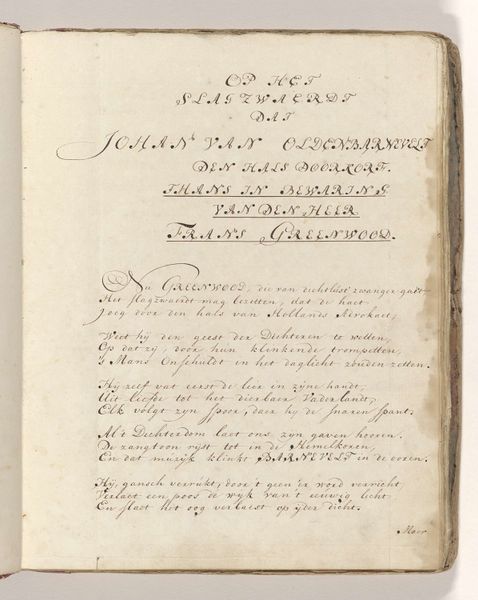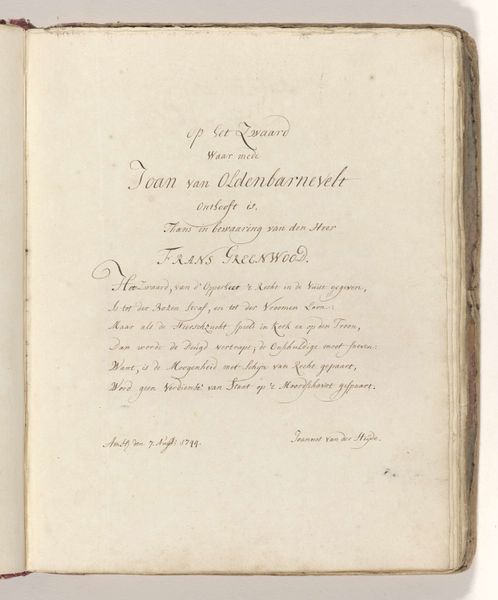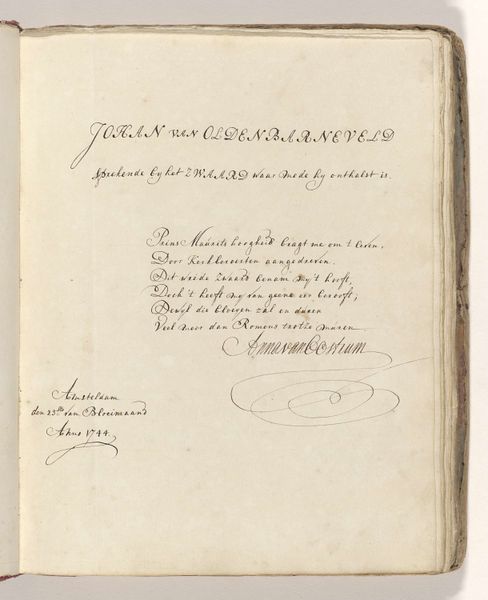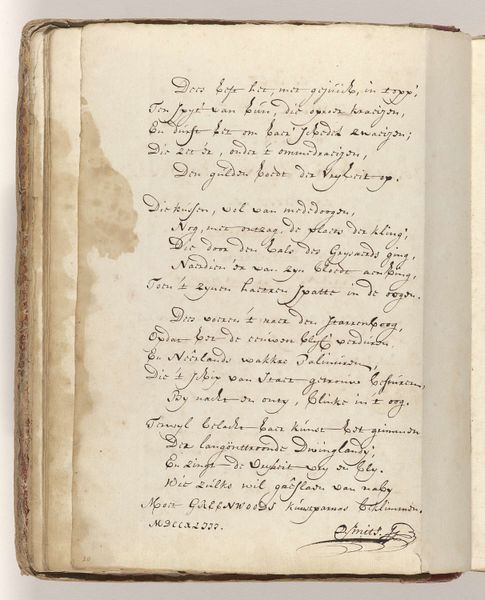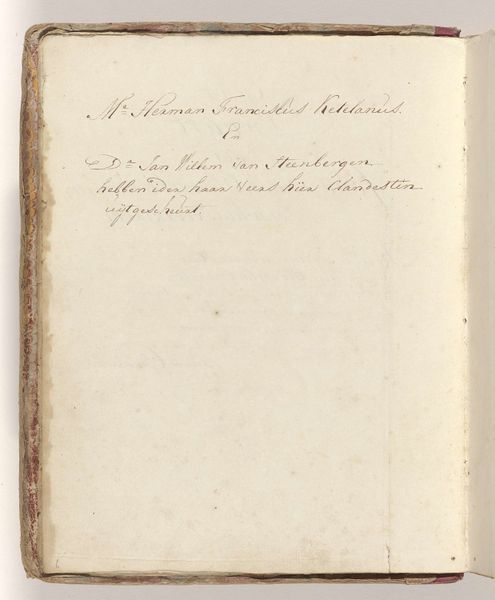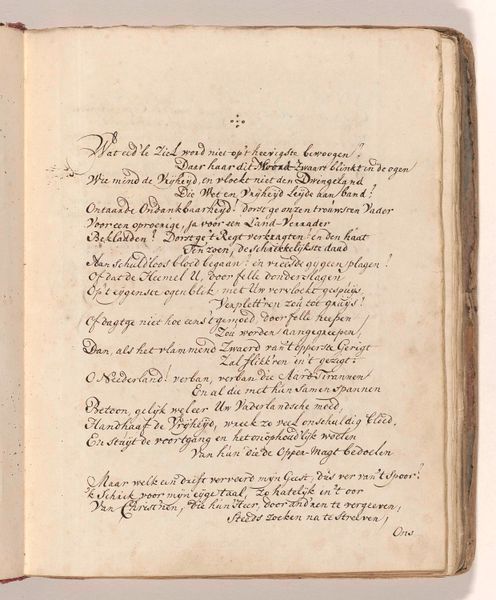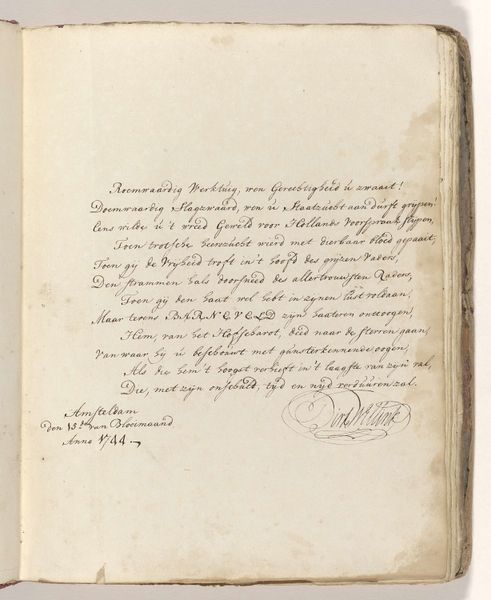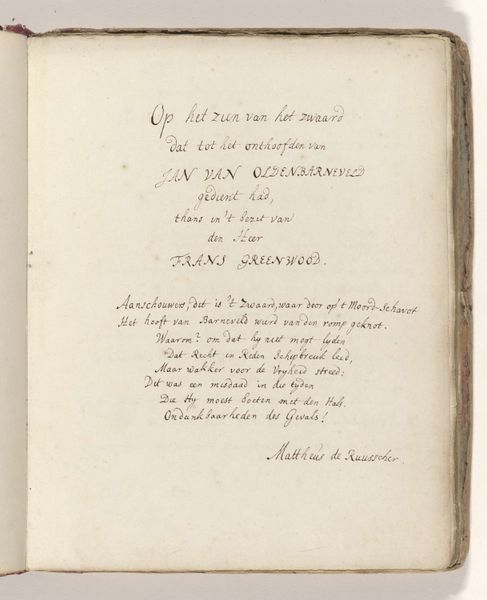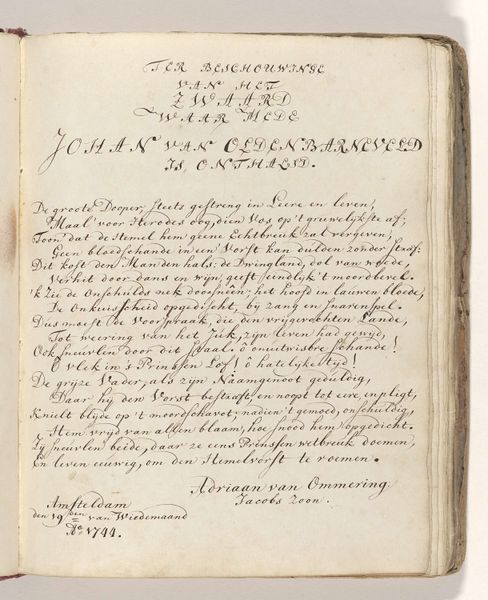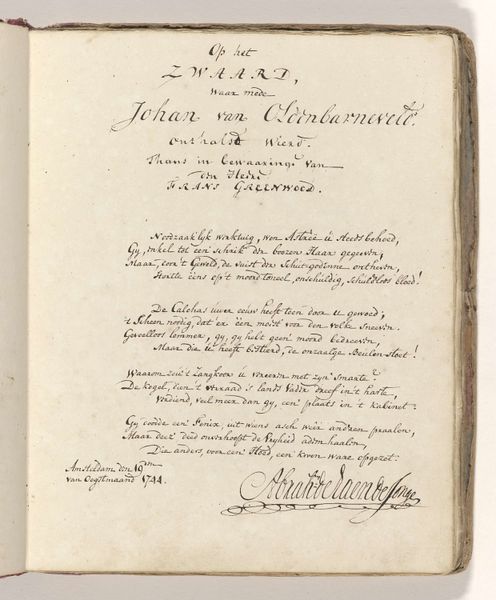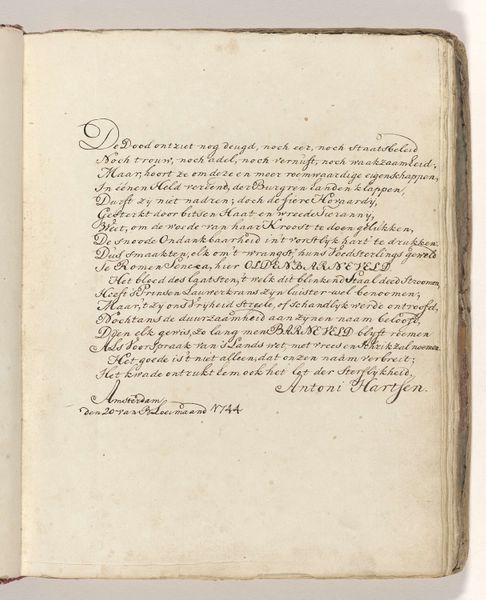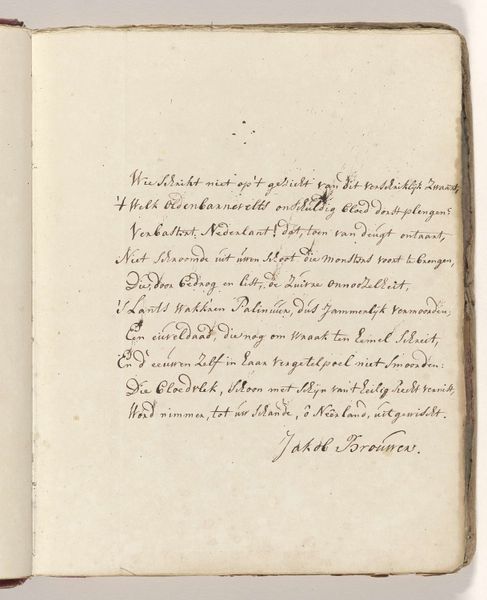
Gedicht op het zwaard waarmee Johan van Oldenbarnevelt in 1619 zou zijn onthoofd 1743
0:00
0:00
drawing, paper, ink
#
drawing
#
medieval
#
narrative-art
#
paper
#
ink
#
history-painting
#
historical font
#
calligraphy
Dimensions: height 275 mm, width 220 mm
Copyright: Rijks Museum: Open Domain
Curator: This drawing, made in 1743 by Dirk Smits, presents a poem written on paper in ink. It’s titled, rather directly, “Poem on the Sword with Which Johan van Oldenbarnevelt Was Supposedly Beheaded in 1619.” Editor: A stark piece, isn't it? The aged paper, the formalized script... it evokes a sense of solemnity and perhaps a touch of morbid curiosity. The tight cropping really amplifies the weight of the text itself as a compositional element. Curator: It’s certainly a striking piece of historical commemoration, linking an object—the sword—to the person of Oldenbarnevelt and the political drama surrounding his execution. However, it should be said that it actually predates the Romantic-era enthusiasm about Medieval art. This is closer to a history painting rendered through calligraphy, which really foregrounds the act of narration itself. Editor: Precisely, the focus is very controlled. Notice the carefully balanced lines, the subtle variations in the ink's density, giving the text both form and a sense of depth. Even though we are confronted with the rather horrific subject of beheading, we don’t "feel" the trauma as much as observe a representation of its memory. The "historical font," as the metadata calls it, also helps the aesthetic. Curator: Indeed. We need to consider too that its public role in 1743, displayed perhaps as a kind of broadside, aimed to serve as a reminder of political realities, or even protest—an artifact connected to collective memory, or what was understood to be such. In many ways, the artwork is evidence of how historical narratives are manipulated. Editor: I would argue that it is a conceptual object, reflecting the symbolic potency of script itself. Think of how many layers of translation there are here: a death by the sword turned into writing. The physical properties, though muted in tone, communicate powerfully through textual rhythm. Curator: A very useful analysis! Considering all these things gives one an even stronger insight into the political potency that these artistic interventions might’ve offered to Dirk Smits’ audiences. Editor: I think I came closer to the aesthetic impact achieved here by presenting a solemn subject through tight structural arrangements. Thank you.
Comments
No comments
Be the first to comment and join the conversation on the ultimate creative platform.
